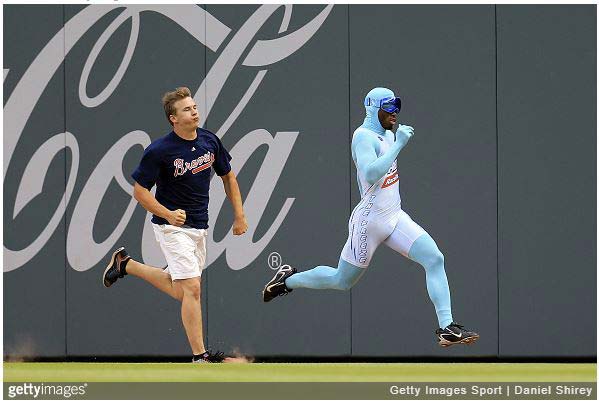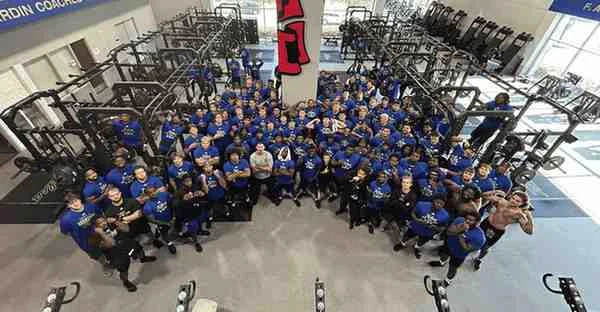You can have your Laker girls, your hot dog races, your T-shirt cannons, and even your San Diego Chicken. For between-action entertainment, give me the Freeze.
In case you missed it, the Atlanta Braves recently started a between-innings promotion called Beat the Freeze, where a spectator is given an enormous head start and is then chased down by Nigel Talton, a.k.a. the Freeze. Nigel is a five-year veteran of the grounds crew and former collegiate sprinter with personal bests of 10.47 in the 100m dash and 21.66 in the 200m dash.
Let’s get the obvious out of the way. There is almost nothing more fascinating than a come-from-behind victory. Lose a 3-1 lead in a playoff series and you will hear about it for the rest of your life. Blow a 28-3 lead in the Super Bowl and your fans will cry. In track & field, nothing gets people on their feet faster than watching an athlete come from the depths of hell to overtake the competition. We love come-from-behind victories.
The reason this article is on a coaching blog instead of a newspaper is because track nerds like me cannot help but analyze a race, even if that race is between a weekend warrior and a grounds crew worker in a racing suit and ski goggles. I’m interested in the wonderfully brilliant come-from-behind aspect of the race, and the fact that two of the competitors have fallen flat on their faces while trying to beat the Freeze. Other than the inherent comedy in seeing a grown man fall on his face in front of thousands of people, my interest is in an overlooked aspect of sprinting: Coordination.
Coordination Is Key
Coordination is one of the three emphases of my early-season training. Most people, even most athletes, vastly overlook the importance of coordination in sprinting. Thankfully, The Freeze (or, more importantly, his competitors) has shown us the significance of coordination at the end of a race.
The “Beat the Freeze” race from foul pole to foul pole is around 160 meters, which means the alactic system becomes fully taxed and the body shifts into using the lactic system as its primary energy source. Since the distance is so short, the aerobic system barely comes into play, so people are not falling down at the end of a race because they are aerobically tired. They are falling down because their central nervous system (CNS) has eroded to the point of affecting their coordination.
Distance runners are significantly more aerobically tired halfway through the mile than a sprinter is at the very end of a 200m dash, yet you never see a miler falling down from aerobic exhaustion halfway through a mile. So many sprinters fall at the end of their races due to CNS fatigue that I wrote an entire blog post about it (“Acceleration, Coordination, Variation: Three Ingredients for Sprinting Success”) after last summer’s Olympics.
Re-acceleration Simply Isn’t Happening
Another reason for the falls you see against the Freeze, as well as many of the falls you see in less-experienced track athletes in early-season races, is that the competitors try to accelerate again when their top speed has clearly diminished. Once you are upright in a full sprint, acceleration is over. Any attempt to reaccelerate while running means you naturally lean forward to help pick up speed.
Once you are upright in a full sprint, acceleration is over. Share on XThe casual fan sees this all the time in football, basketball, baseball, soccer, and even video games. Going from a jog to a sprint is a good idea. But when you are starting at your current top speed, which has slowly eroded as your muscles fire and your coordination wanes, leaning forward becomes a very bad idea. You can see this very clearly in the following video, which is perhaps the most famous video of the Freeze.
Video 1: This may be the most famous video of the Freeze, a between-inning sensation at Atlanta Braves home games. The end movements of the Freeze’s racing competitor demonstrate why leaning forward at full sprint speed is a bad idea.
My advice to beat the Freeze? Work on your coordination, improve your top speed, and realize that once the Freeze has passed you, the race is over.
[freelap-share]
[mashshare]






